We know all about Belize's protected areas, which covers 36% of our national territory - and while we've extensively featured some of those areas on land, what about marine protected areas?
Those are under the same pressures as those on land - but are even more vulnerable for a number of reasons.
Tonight in the second installment in the series Reef Beat, Janelle Chanona looks at those protected areas starting with the world famous Hol Chan where striking a balance has been a constant challenge:..
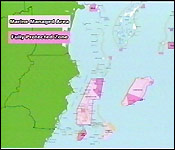
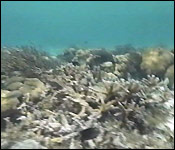
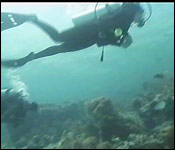
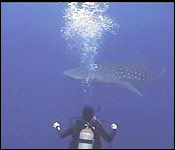 Today more than two and a half million acres of Belize's land and sea, approximately forty-four percent of the country, is under some sort of protective status.
Today more than two and a half million acres of Belize's land and sea, approximately forty-four percent of the country, is under some sort of protective status.
Marine protected areas are protected areas that restrict human impact to protect living or historic resources.
Restrictions within MPAs range from the kinds of development that can occur within the park to the types of fishing gear that can be used, to complete bans on removing marine life of any kind.
MPAs are an important step in ensuring that future generations can enjoy the splendour of the sea and benefit from its resources as we have by preserving critical habitats, acting as a replenishment zone for heavily exploited species and providing a base for educational outreach.
The Hol Chan Marine Reserve has been championed as a success story in marine protected areas management. The protected area was established in 1997 through the joint efforts of the tour guide and fishing communities in San Pedro. Both groups recognized their dependency on the reef and realized if they didn't work together, they would both lose.
An underwater visit to Hol Chan reveals the impressive fish stock and coral cover that has been allowed to thrive and most importantly, multiply.
Striking a balance between fishing, tourism and environmental concerns is a challenge that's also facing Belize's spawning aggregation sites. Of the 13 such sites that have been identified in Belize, the Gladden Spit Marine Reserve is one of the most popular. Every year, thousands of spawning fish attract the world's largest living fish species: the whale shark. The slow moving filter feeding shark cruises the blue depths, consuming the floating fish eggs.
Placencia native Brian Young has been diving in this area all his life. When he started bringing guests in 1992 as a tour operator, Young didn't give much thought to the fish and visited the area as late as possible to catch the action.
Brian Young, Seahorse Dive Shop
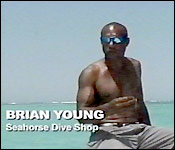 "After we declared the park a reserve, I personally recommend that we cut that out because there was too much boat staying for the spawning and at that time I believe it was too much harassment for the fish."
"After we declared the park a reserve, I personally recommend that we cut that out because there was too much boat staying for the spawning and at that time I believe it was too much harassment for the fish."
So we cut that out completely. Now the park is closed at five so the fish can spawn in their own way, in their own natural habitat, no interference, that is to ensure that we have this forever and forever.
And like his colleagues in San Pedro, Young says it's all about teamwork.
Actually we have several meetings in terms of how the season was, what's wrong, what needs to be corrected and everybody participate in making those decisions and once those decisions are made then those decisions are sent to government to be made into regulations. I think that's very very important. As long as you have community participation you are going to be successful."
Armeid Thompson
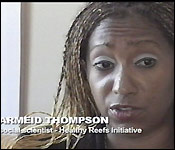 "Involving the tour associations like BTIA and BTB is so critical because those are the implementing arm of the policy in the country."
"Involving the tour associations like BTIA and BTB is so critical because those are the implementing arm of the policy in the country."
Armeid Thompson is the Social Scientist and Outreach Coordinator of the Healthy Reefs for Healthy People initiative. She believes tour operators like Brian Young play an important role in the management of MPAs.
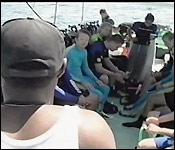 They are the ones who are the ones that are able to say, you know what? We don't see as many fish, you know the coral is getting this kind of red filmy algae over it. So they are actually the first line of defence as if they were part of a national security plan to say, something is going on out there.
They are the ones who are the ones that are able to say, you know what? We don't see as many fish, you know the coral is getting this kind of red filmy algae over it. So they are actually the first line of defence as if they were part of a national security plan to say, something is going on out there.
While such partnership is key, everyone agrees that effective, efficient enforcement of the rules and regulations of MPAs is a top priority in protected area management.
Melanie McField
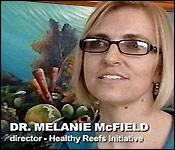 "We can do it but there's a cost but we have to realize that the cost of doing nothing is going to be more. Belize is gaining about a billion dollars Belize a year off the reef...that's the value of having that reef there in terms of tourism, fishing and shoreline protection and we can't just assume that we are going to be able to keep reaping that benefit if we don't take care of it."
"We can do it but there's a cost but we have to realize that the cost of doing nothing is going to be more. Belize is gaining about a billion dollars Belize a year off the reef...that's the value of having that reef there in terms of tourism, fishing and shoreline protection and we can't just assume that we are going to be able to keep reaping that benefit if we don't take care of it."
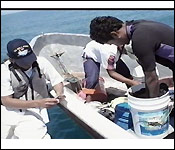
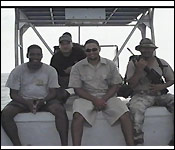
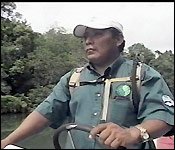 Despite the millions of dollars currently being pumped into enforcement efforts in and around MPAs, it is simply not enough...which is why experts say that duty must become everybody's responsibility.
Despite the millions of dollars currently being pumped into enforcement efforts in and around MPAs, it is simply not enough...which is why experts say that duty must become everybody's responsibility.
Melanie McField
"We just have to keep at it I mean I think sometimes we get tired because the same people have been in conservation for a long time and we've been saying this forever but there's always a new crop of fourth form students to say, every age needs to hear it over and over and even people that have heard it before need to be reminded."
Lisa Carne
"We have a whole part of Belize, the inland part, where people haven't been to the sea or haven't even swum in the ocean before and so I think by actually getting more people out to the physically out to the marine environment with the
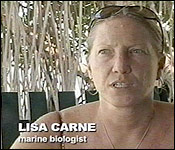 education behind it that would open up a lot of people's eyes and have them understand how vital and important marine environment is here to Belize."
education behind it that would open up a lot of people's eyes and have them understand how vital and important marine environment is here to Belize."
For more information on how you can support local conservation and protection efforts for Belize's marine resources, please contact Healthy Reefs for Healthy People at www.healthyreefs.org
Tune in next week for the nest installation in the series; it will be about Alternatives for fisherfolk.
Reef Beat is a series Produced by Janelle Chanona in conjunction with 7news and The Healthy Reefs For Healthy People Initiative.



